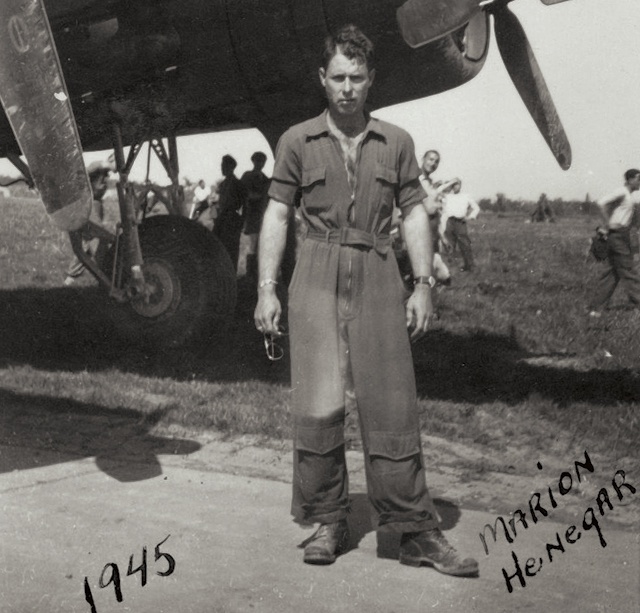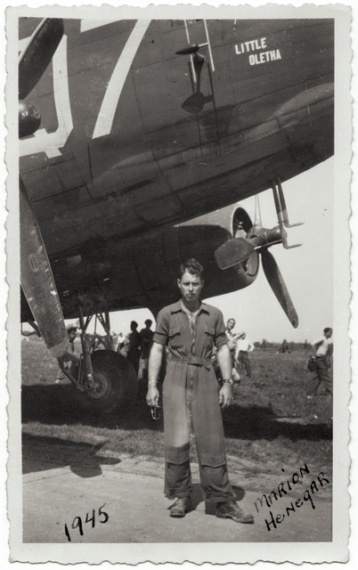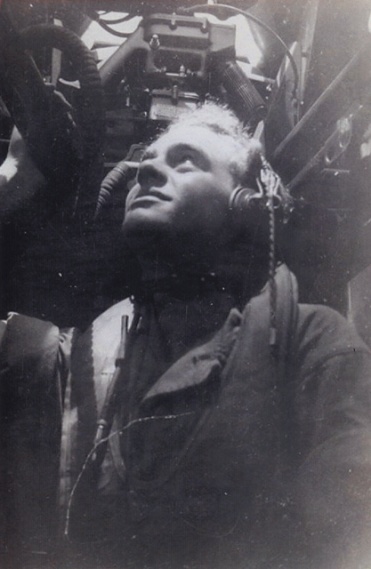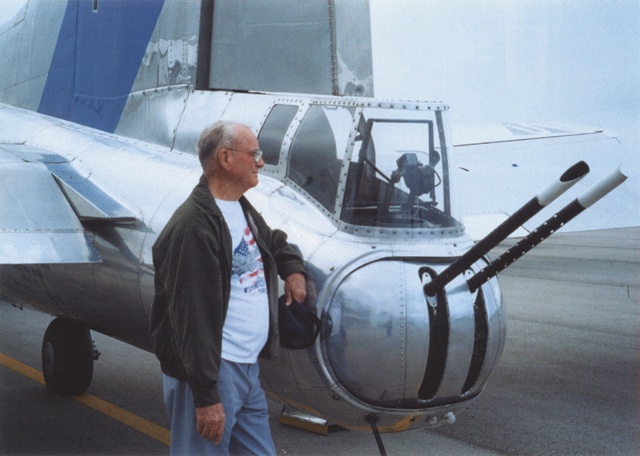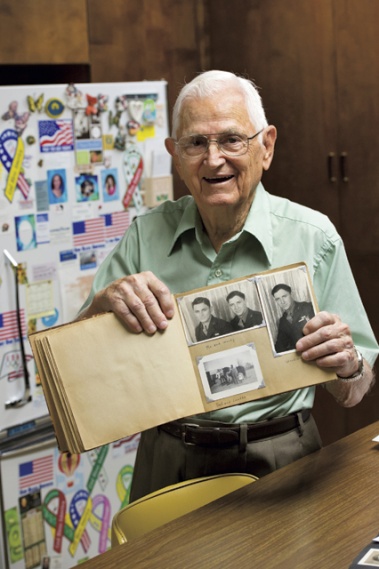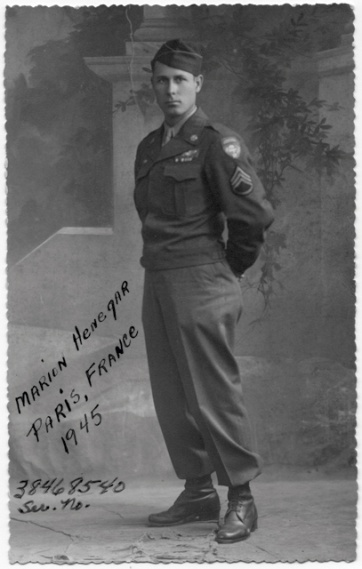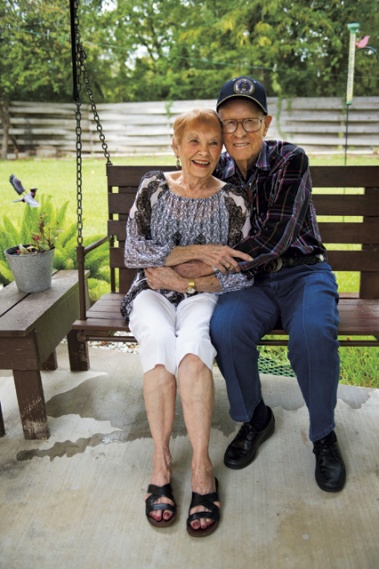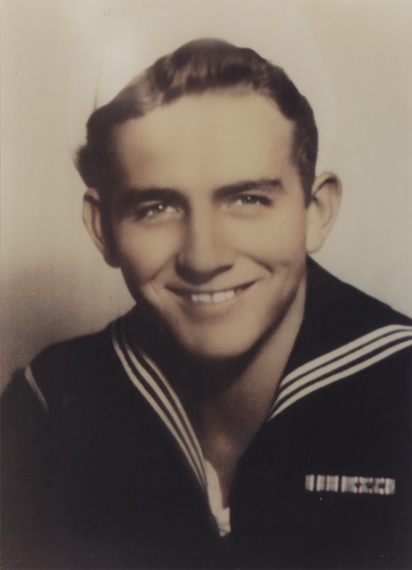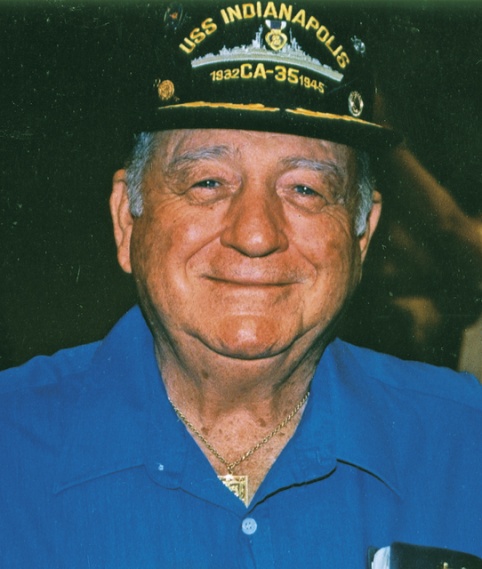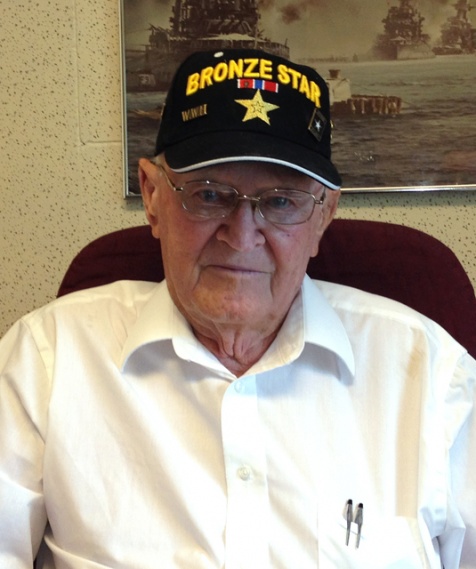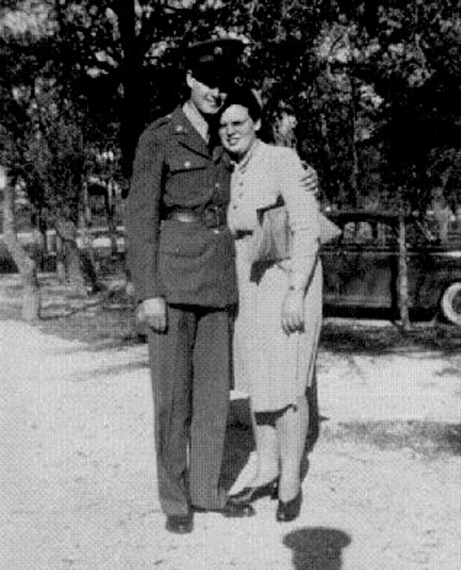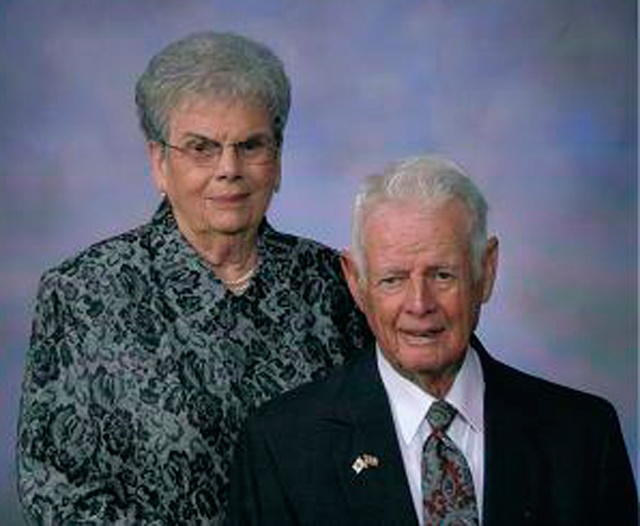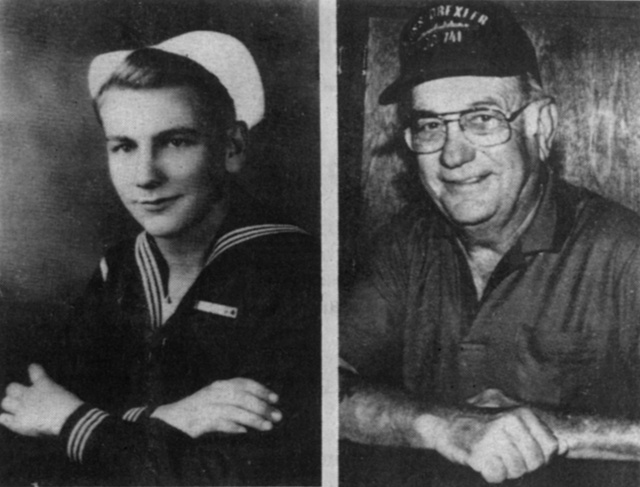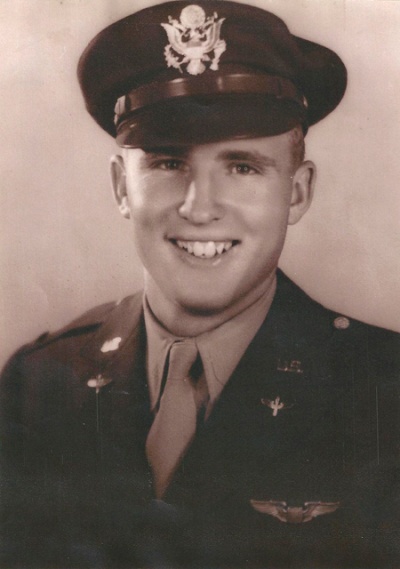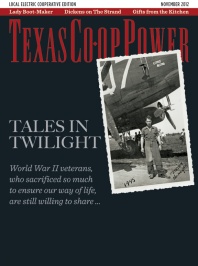The refrain of an old Army ballad, made famous by World War II Gen. Douglas MacArthur, goes, “Old soldiers never die, they just fade away.”
The truth is, America’s remaining World War II veterans—most at least in their late 80s—are leaving us; about 680 die every day, according to the Department of Veterans Affairs. In a few years, the last page will turn on these living, breathing history books, men who fought a war that resulted in more American battle deaths and wounded than any other U.S. conflict. Despite a wealth of documentary films and oral histories in the archives, countless stories of average citizen-soldiers remain untold or forgotten.
“It is sad to see that these simple heroes are leaving us at such a fast rate,” said Floyd Cox, volunteer administrator of an oral history program at the National Museum of the Pacific War in Fredericksburg. The museum has collected 4,400 histories, but most are locked in vast archives and none is available online. Volunteers remain busy capturing stories from veterans before the program inevitably winds down.
In honor of Veterans Day (November 11, the anniversary of the armistice that ended World War I in 1918), I interviewed more than a dozen Texas World War II veterans. They were mostly small-town and farm-raised kids propelled into deadly situations, living to tell how they survived parachuting into enemy territory, fighting in hand-to-hand combat, firing mortars and suffering frostbite, being stranded in the vast Pacific after the sinking of their ship and escaping a burning tank. Some opened up after years of reticence; some shed tears. One vet and his prewar bride demonstrated their everlasting love, and many told of their unfathomable will to live and immense gratitude.
Now, some 70 years after U.S. troops were pulled into the war, we get the rich details of lives so cruelly interrupted. Here are some men we would like you to know:
‘We didn’t even know where Pearl Harbor was’
On December 7, 1941, 17-year-old Jetty Cook and some buddies heard the news after they watched a matinee of “Sergeant York,” the World War I movie starring Gary Cooper.
“Extra, extra! Pearl Harbor attacked!” a paperboy cried.
“We didn’t even know where Pearl Harbor was,” Cook said of Japan’s bombing of the Hawaiian military base that instantly drove America into war.
A year later, Cook left his hometown of Big Spring and enlisted in the Army Air Corps. In the following months he trained as a gunner on a B-17 bomber.
On July 20, 1944, on a bombing run over Germany, his aircraft was hit by flak, which caused two engines to fail and another soon to catch fire. The plane limped westward as it slowly fell from the sky. The airmen jumped just before the bomber crashed somewhere in German-occupied Belgium. Cook parachuted, landed safely, quickly gathered up his chute and hid in some bushes. He watched as German soldiers captured fellow U.S. troops, narrowly escaping detection by a Nazi soldier and his dog.
When the coast was clear, Cook walked westward, drank from a muddy puddle and after midnight took a chance by knocking on the door of a modest farm house, not knowing whether he was in Germany. A farmer gave him some bitter coffee, black bread and shelter in a hayloft. The next day, a member of the Belgian Resistance questioned him at length to ensure he wasn’t a German plant.
Over the next two months, a cast of Belgian partisans took turns hiding Cook, who often posed as if he couldn’t hear or speak. He was periodically reunited with some of his crewmates and shuttled to safe houses, including a room over a bar frequented by German soldiers, a brothel (also visited nightly by the Germans) and a convent. He participated in a bank robbery to obtain food rations, helped a team of Resistance members blow up a railroad bridge to send a trainload of German troops to their deaths and helped capture German Gestapo agents after American and British forces began to liberate Belgium.
Cook and a fellow airman narrowly escaped death when a group of Belgians, emboldened by the retreat of German forces, captured them and put nooses around their necks, insisting they were German spies as they dragged them to a lamppost to be hanged. Then a young Belgian woman stepped up and said she knew the local police chief secretly housed an American and insisted they check. They phoned from a nearby store and verified Cook had been hiding out with the chief’s family. Within minutes, they broke out bottles of wine and they all celebrated.
Cook eventually made a career in the Air Force. Over the years, he returned to Belgium numerous times to reunite with people who aided him and attend anniversary events. Today, Cook, 88, lives in Hunt with his wife of 42 years, Wanda.
‘They were bayoneting and shooting everything that moved’
On May 18, 1942, five months after Japan bombed Pearl Harbor, Arwin J. “Jay” Bowden enlisted in the Marines. One of eight children born to a cotton farmer and his wife near Vernon in North Texas, he had just graduated from high school.
By November 1942, Bowden, quickly trained as a radio operator, was shipped off with his division to New Zealand, where they set up a defense force to guard against a possible attack by Japan and built camps for troops. Within a year, Bowden and his regiment entered their first combat at the Battle of Tarawa, a strategic atoll about 2,400 miles southwest of Pearl Harbor that U.S. forces needed to refuel aircraft and serve as a launchpad to retake the Philippines and, eventually, attack Japan.
Japan had built a landing strip on Tarawa’s main island and fortified the island with many stockades, firing pits, underground tunnels and concrete bunkers protecting big guns aiming down the island’s lagoon and beaches. One Japanese commander said it would take “1 million men 100 years” to conquer Tarawa. “This was probably the most fortified 290 acres in the world,” Bowden said.
Before dawn on November 20, 1943, Bowden was aboard a troop transport with about 2,000 Marines, part of the largest U.S. operation in the Pacific at the time. He was among troops sent ashore on landing craft known as Higgins boats, but his boat got stuck on a reef. He and 32 other Marines boarded two amphibious track vehicles to get ashore. As they approached the beach, the Japanese blew up Bowden’s vehicle and killed most of the men who were with him.
The fire burned off nearly all of Bowden’s clothes except his boots, knife belt and the leggings he wore under his uniform. His right ear was nearly burned off, as was most of his hair. He dove into knee-deep water and then hid with five other Marines behind a second vehicle. They nursed their wounds and stayed there as Japanese soldiers aimed their weapons at other targets. Near dusk, they decided their best hope was going into deeper water—to the reef about 500 yards out, where they hoped for a rescue.
Earlier in the day, Bowden had picked up a waterlogged rifle that was useless except for the bayonet at the end. As they moved out, Japanese soldiers spotted them by the light of the fires on the island. “They came out and they were bayoneting and shooting everything that moved,” Bowden said. Several enemy soldiers came near, and Bowden somehow got close enough to one of the Japanese carrying a machine gun to plunge his bayonet into his chest.
In such an adrenaline-charged moment, “you don’t know where all your energy is coming from, and you don’t remember where or when. Anyway, I survived,” Bowden said.
He and the two other surviving Marines scrambled away and were picked up by a U.S. ship on which they received immediate medical attention before being sent to a hospital in Honolulu.
Meanwhile, after 76 hours of fierce fighting, the Marines took the island but suffered more than 1,000 deaths and 2,000 casualties, while the Japanese lost more than 4,600 troops. Tarawa shocked the nation for its high cost in U.S. lives and was the subject of a documentary that won an Academy Award in 1944.
Bowden, 89, recovered after six weeks of medical care and returned to participate in other battles in the Pacific. After the war, he spent most of his work life at Southwestern Bell. He is a widower and lives in San Antonio.
‘I was thrilled to death because he came back whole’
It was 1939 in a small town in Oklahoma when Marion Henegar, 21, married his sweetheart, Oletha, just 17. By 1943, Henegar had entered the Army Air Corps and spent three years as a radio operator on a C-47 that hauled supplies and paratroopers to the front lines in Europe.
To drop parachutists, Henegar’s aircraft often flew low, just 650 feet above ground, plenty close enough to be shot down by the Germans. “When we got back, we’d count the holes in the planes,” Henegar said.
For three years, Henegar and Oletha corresponded constantly. “We wrote sometimes once a day, sometimes two,” Oletha said.
Oletha sent her husband care packages with ground coffee, canned milk, pecan pies and—once—a pair of boots better-made than his Army-issued pair. Because of weight limits on packages, she sent each boot separately.
Near the end of the war, Henegar and his crew were assigned a new C-47. The only married one of the bunch, Henegar was given the honor of naming the plane. He chose “Little Oletha.” Henegar proudly showed a black-and-white photo of a strapping young man in a jumpsuit, standing under the plane with his wife’s name painted on the fuselage.
After the war, Henegar flew back to the States, landed in Boston and hopped a bus back home. Oletha drove to pick him up at the bus station in Tulsa, Oklahoma. It was swarming with giddy GIs who grabbed any female they could.
“They would run if they saw a woman, and they would hug her and kiss her and fling her in the air. They were so happy the war was over,” she said. “Most of them were drinking. It was wild.”
Oletha wanted none of that, so she hid behind a tree and snuck into the terminal. She was at the door of the bus station when Henegar stepped off the bus. “Oh, he looked wonderful. He was a very handsome Air Force guy,” Oletha recalls. “He still is. I was thrilled to death because he came back whole, and I felt for the ones who came back the other way.”
“We spent lots of time kissing and hugging, and we couldn’t keep our hands off one another,” Oletha said. “We were looking forward to being together again.”
The couple had two children and moved to Texas, where Henegar spent 37 years in the energy business, making use of the skills he developed in the military to operate electronic instruments to find oil for Phillips Petroleum Co. and Chevron. This year, the Henegars marked 73 years of marriage.
“I’m proud that I served in the war,” said Henegar, 95, who lives in Livingston and is a member of Sam Houston Electric Cooperative. “You just do what you’re supposed to do. And I thank the Lord for watching over me.”
‘I thought it was angels coming’
In July 1945, L.D. Cox was a 19-year-old helmsman aboard the USS Indianapolis, a heavy cruiser that carried a secret wooden box across the Pacific to the small island of Tinian. He later learned the box contained parts and enriched uranium for the atom bomb nicknamed “Little Boy,” the weapon loaded on the aircraft Enola Gay and dropped on Hiroshima.
Just after midnight on July 30 and one week before the dropping of the atom bomb led to Japan’s surrender, Cox’s ship was struck by two torpedoes fired by a Japanese sub. The more than 600-foot-long Indianapolis sank in just 12 minutes, resulting in one of the most dramatic stories of the war.
With the ship quickly going down, Cox put on a life preserver and handed one to the ship’s captain, Charles McVay. In the ensuing chaos, the captain ordered the sailors to abandon ship.
For the next four days and five nights, Cox and hundreds of men floated, most without food and water. Many men died of dehydration, drowning and attacks by sharks, which Cox could see circling under the surface. Some hallucinated and swam off, never to be seen again. Dying of thirst, one sailor removed his life vest, went under to drink the saltwater and died within about two hours with brown foam around his tongue and mouth.
Cox floated with a pack of about 30 others. A couple of days after the sinking, Cox remembers a shark surfaced and locked onto a sailor floating only three feet away from him. “He came up like lightning and took him down and you couldn’t see anything else,” Cox said.
Cox and the remainder of his group who survived slowly sank lower and lower in their waterlogged life preservers, their noses barely above the water after being afloat more than 100 hours. They were finally rescued when a U.S. pilot saw them by chance one afternoon. Ships were eventually dispatched and picked them up after dark. Cox remembers seeing a spotlight shining up into the dark sky, a beacon of hope from a ship that many sailors later said saved their lives by giving them the will to hang on. “I thought it was angels coming,” said Cox.
The sinking of the Indianapolis resulted in the deaths of almost 900 of the 1,200 men on board. McVay, who also was rescued, was later court-martialed for failing to zigzag to avoid torpedo attacks, a controversial rebuke that Cox and other survivors never have supported.
After the war, Cox graduated from Texas A&M University, served as state sales director for a livestock feed company and operated a ranch. He still owns an 800-acre cattle ranch that is served by Comanche Electric Cooperative and lives in Comanche with his wife of 63 years, Sara Lou.
Only the grace of God—and his strong will to survive—allowed him to live, said Cox, 86, who frequently speaks to groups of schoolchildren about his war experience. Unlike some senior citizens chagrined by young generations, Cox expresses optimism and encourages elders to impart strong moral leadership and guidance on today’s kids, who one day will lead the country.
“What I tell them is freedom is not free,” Cox said. “Somebody has to fight to keep our freedom.”
‘I had frostbite on my feet, hands, ears and nose’
In the winter of 1944, about six months after graduating from high school in Brady, Curley Awalt found himself on the front lines of the Battle of the Bulge, firing mortar shells at German troops.
Awalt’s infantry division was the first U.S. force to enter the battle, trying to face down the massive German offensive in Belgium near the end of the war.
“We were the greenest division in Europe. We’ve never been in battle, and somehow the Germans knew it,” Awalt said during an interview June 17 at the National Museum of the Pacific War, where he volunteered. The museum is in Fredericksburg, where Awalt lived. On the afternoon of the first day of the battle, before the start of ground action, Awalt stood to watch a dogfight between U.S. and German aircraft. As he was taking in the show, his best buddy suddenly tackled him and threw him into the snow. “Don’t you let me catch you watching,” he was told. “Do you know you could get killed out there?”
The European winter of ’44 and ’45 was the coldest in memory, and soldiers suffered through heavy snow and freezing rains. Without insulated boots, most of the ground troops suffered frostbite or trench foot. Awalt, who walked gracefully but stiffly, was still suffering from the effects of the frostbite, which resulted in the deadening of nerves in his extremities. “I had frostbite on my feet, hands, ears and nose,” he said.
For 39 days, Awalt’s three-member team fired 11-pound shells at the Germans using a heavy mortar. Constantly on the move, the team continually broke down and carried the three-piece, 136-pound weapon. As a result of the loud blasts and having no ear protection, Awalt lost all high-pitched hearing in both ears, making it impossible to enjoy a movie or a church sermon or to distinguish sounds when in a group.
In September, Awalt was placed in a medical care facility. “I should be home within a month,” Awalt told me in a weakened voice over a cell phone. “I fell, and they put me in here.”
But on October 2, Awalt, 86, passed away. He is survived by Lou Awalt, his wife of 27 years.
Another Battle of the Bulge veteran is Leston Berry, 91, a member of Hamilton County Electric Cooperative Association who lives near Goldthwaite on a small ranch with his wife of 69 years, Ruby Nell, 85. His younger brother, Hubert, also a World War II veteran, lives down the road.
Because he is extremely hard of hearing and his memory is shaky, much of my phone conversation with Leston was aided by Ruby Nell, who listened on an extension.
Berry was among the U.S. soldiers who hit Utah Beach on the Normandy shore just after D-Day, June 6, 1944, and he moved across Europe to participate in the Battle of the Bulge by driving a half-track vehicle equipped with four .50 mm guns.
“We were a mobilized unit, and I was in five major battles, but I can’t remember what they all were,” Berry said.
Berry does remember being injured by shrapnel one day when a German Tiger tank fired and blew apart his vehicle. When he returned home, he was unable to ride his ranch horse without pain. “He still has it [shrapnel] in his leg … below his thigh,” Ruby Nell said. “It hurt him a good bit to begin with, but I think it doesn’t bother him unless something presses against it.”
Berry sometimes is plagued by nightmares.
“It seems like it has gotten better the last couple years,” Ruby Nell said.
“I just wake up and dream I was in a battle,” Berry said, his voice quivering.
“He’s choking up a bit,” Ruby Nell said. “He doesn’t talk about it much anymore. He doesn’t talk to his children about it.”
‘There’s not too many of us left anymore’
On a Monday afternoon at the Veterans of Foreign Wars Post 7105 in Fredericksburg, a stooped, white-haired man worked behind the bar.
“Do you know any World War II veterans who come here?” I asked.
“Me,” said the man, whom I soon learned was Art Crenwege, 85, commander of the post. Crenwege served near the end of the war on a troop transport ship in the Pacific Theater for the U.S. Coast Guard, a branch of the military that had a little-known role in the war.
The highlight of his service was meeting Adm. Chester Nimitz, commander of the Pacific fleet, while Crenwege’s ship was being repaired in the Philippines. A quick encounter with Nimitz was arranged after the crew learned Crenwege was from Fredericksburg, also Nimitiz’s hometown.
Beyond that, Crenwege declined to open up about his war experience. “Some of my kids don’t know what I’ve been through,” he said, in between delivering a handful of cans of Lone Star and Coors Light to men sitting at a round table. Within a few minutes, Crenwege nudged me: Harold Tatsch had just entered.
An affable man wearing a cap with “USS Drexler” across the front, Tatsch, 85, said he comes to the VFW just about every day to drink beer.
He was 17 on October 4, 1944, when he dropped out of high school and joined the Navy. On February 13, 1945, his destroyer Drexler left San Diego and escorted aircraft carriers to Pearl Harbor, Guadalcanal and Okinawa.
On May 28, 1945, the ship faced a relentless attack by Japanese kamikaze planes off Okinawa. Tatsch worked in a small cubby just below deck and passed shells up to gunners. Sailors shot down four of the planes, but one hit the starboard side of the ship and another crashed just above the water line, a fatal blow that sank the Drexler.
Tatsch, who said he put on a life jacket after the first plane hit, went over the port side and clung to the edge. Next thing he remembers, he was in the ocean, about 50 yards from the ship as it disappeared from sight. “I spent about three hours in the water before they picked me up,” Tatsch said. “Then I was ready to go home.”
Almost half the crew, 158 sailors, died.
Sent for shore relief, in August he was standing night watch in Corpus Christi when he heard on the radio the end of the war was declared.
Tatsch, who sports a tattoo of a U.S. flag on one forearm and a knife on the other, spent the next two years in the Naval Reserve. He moved back to Fredericksburg, married twice and spent 27 years working for the State Highway Department. He plays “lousy” golf once a week and has attended several reunions of the survivors of the Drexler. “There’s not too many of us left anymore,” he said.
‘That’s when he started shooting’
Sam Smith fulfilled a boyhood dream when he became a pilot during the war.
Growing up in the small towns of Goldthwaite and Whitney, Smith built airplanes from kits with his father and imagined flying one some day. In 1935, his dad, a utility worker, died in an electrical accident. Smith was 11.
Smith kept the dream alive. He turned 18 on September 11, 1942, and, after he convinced his mother to provide a permission letter, he took that and three letters of recommendation to a recruiting office in Dallas for the Army Air Corps, which had more stringent enlistment requirements than the Army. He passed an eight-hour written test to determine whether he was qualified, was sworn in and called to active duty on April 6, 1943. Fourteen months later, he graduated from flying school in Pecos, where he learned to navigate, fly at night and pilot larger and larger aircraft. He was sent to Roswell, New Mexico, for transition to flying a B-17 bomber as part of the 360th Bomb Squadron of the 303rd Bombardment Group, otherwise known as the “Hell’s Angels.” He was assigned a crew of nine: a bombardier, a navigator, a flight engineer, a copilot, a radio operator and four gunners.
In January 1945, Smith and about 8,000 soldiers and airmen boarded a troop ship and sailed to England. Smith and his crew ended up in the miniscule town of Molesworth, about 70 miles north of London, where they trained to fly in formation.
In March, Smith flew the “scariest” of his 24 missions over Germany. Smith’s squadron was sent to bomb a refinery in Hamburg. As they approached the target, the flak from bursts of antiaircraft fire was so heavy it seemed “you could walk on it,” Smith said. A bomber flying near Smith’s was shot, a wing caught fire and it exploded, sending flames across the sky.
One of the German Messerschmitt Me-262s, the world’s first jet-powered fighter aircraft used in combat, zeroed in on Smith’s plane, easily outmaneuvering the lumbering bomber. With the German jet “coming straight at my nose,” Smith had to act instantly or be shot down. “I pulled back on the throttle and pushed the yoke forward to make the airplane dive. I guess I did it exactly right, and that’s when he started shooting.” The shots missed, the fighter zipped past and Smith slipped away.
On his next mission, Smith’s squadron was sent to bomb a German base in Hopsten filled with artillery and 16 of the Me-262s. Smith’s bomber was hit multiple times, and all of the Plexiglas on the right side of the plane was shot out. Otherwise everything seemed normal as he returned and approached the airfield at Molesworth. But when he touched down, Smith’s three-wheeled plane jerked hard to the right. Smith knew he needed to get off the runway fast to provide clearance for a line of following planes, some of which were too short on fuel or too damaged to make a second pass. Smith ran the aircraft briefly on two wheels until the right wing dropped, and then he literally stood on both brakes, slowing the plane and looping it off the runway to stop on the grass. Upon inspection he discovered the problem: The right wheel and tire were shot with holes the size of grapefruit.
After the war in Europe ended in May 1945, Smith was sent to Fort Sam Houston and then home to Goldthwaite for a month-long leave. Hanging out at a drug store in Goldthwaite, “I spotted this good-looking babe,” Smith said. For the next month, Smith dated Mary Ann Miller every single day. Before he returned to Fort Sam, they agreed to get married after the war. Soon enough, Smith was assigned to serve as an instructor pilot in Hobbs, New Mexico. But on the way, he called his girl. “Look, Mary” Smith said, “why don’t we get married now?” She agreed, and on August 4 they married at the First United Methodist Church in Goldthwaite. Two days later, American airmen dropped the atomic bomb on Hiroshima, and Japan surrendered August 15.
After the war, Smith attended Texas A&M University and built a career as a chemical engineer. Today, at 88, he still does consulting work on international projects.
In August, the Smiths, who live in Kerrville, celebrated 67 years of marriage. “It may not last,” Mary Ann joked.
Later the same month, Smith was honored for his war service by receiving the Distinguished Flying Cross at San Antonio’s Randolph Air Force Base. The medal was awarded decades late because a colonel declined to sign off on higher-level medals for airmen who didn’t participate in the war before or during the D-Day invasion. At a 1998 reunion, the colonel said he was wrong and apologized, and Smith’s squadron commander helped Smith get the medal.
“I was proud to receive the medal and the honor, but I felt very humble about it because a lot of my friends couldn’t be there,” Smith said. “They’ve passed away.”
‘This is one of the guys who got us out of that damn hospital!’
Brothers Arnold and Vic Mathias grew up near Killeen in Central Texas. Shortly after the U.S. entered the war, somebody from the Army came by the house and told the family it had 60 days to move because the Army was locking up land to build what would become Fort Hood, the nation’s largest Army base. The family moved to Copperas Cove, and not long after, Arnold and Vic enlisted in the Army.
Arnold, 90, the older of the two, told me his story June 12 as we sat outside a departure gate at Austin-Bergstrom International Airport. Arnold, who lives in Waco, and 24 other vets, including Vic, were getting ready to fly to Washington, D.C., to visit the National World War II Memorial. They were participants of the first Central Texas Honor Flight, a national nonprofit group that is racing to send the dwindling number of World War II vets to visit their memorial.
Arnold wore two hearing aids and a ball cap with a Purple Heart patch on it. He told of commanding a Sherman tank after Allied forces landed in France on D-Day. In early 1945, Arnold was driving his tank in Germany’s Ruhr Valley when it was blown apart by a rocket fired by an anti-aircraft gun that the Germans had converted to fire on U.S. tanks.
He was injured by shrapnel all over the left side of his body, with metal pieces still lodged under his skin 67 years later. He has hearing loss that still causes ringing in his ears.
Arnold said his proudest moment of the war came a few days later when he was recovering on a cot at a hospital in France. The soldier next to him, who had a leg blown off, saw his arm patch that indicated he was a member of the 13th Armored Division, the same unit that only weeks before had liberated dozens of captured and injured U.S. soldiers from a hospital in Germany.
“Hey guys,” the soldier announced, “this is one of the guys who got us out of that damn hospital!” Suddenly a cheer erupted as soldiers throughout the hospital expressed their gratitude.
After telling his story, Arnold and other vets had to catch their flight to complete possibly their last military mission: to visit their war memorial. The gentlemen, most using walkers and canes or being pushed in wheelchairs by chaperones, captured the attention of passersby and airline employees as they slowly moved through the concourse. The grateful onlookers applauded. It was a sweet sound.
‘They saved my life three times’
On the other side of the war, over the Pacific, Travis Budlong piloted a B-29 Superfortress, a heavy bomber and among the newest and largest aircraft used in the war.
I met Budlong at Austin-Bergstrom International Airport on June 12, an hour before he boarded a flight bound for Washington, D.C., to visit the World War II Memorial as part of Honor Flight Austin.
Budlong was accompanied by his daughter, Ann Schneider, who pushed him to a security checkpoint in a wheelchair that he used on occasion while he was mending from a broken hip he suffered late last year.
On July 3, I interviewed Budlong for nearly two hours in his spacious, sun-filled independent living apartment in West Austin. He served coffee, and I was playfully greeted by his daughter’s Yorkie terrier that he frequently dogsat. Budlong was cheerful and gracious, and I quickly found that he had a sharp memory and an ability to bring to life colorful stories with rich details and insights.
Occasionally using a walker, he showed me a photo of his crewmates standing outside their B-29, with all the other 10 airmen looking in the direction of Budlong—a handsome blond-haired pilot. “I was the stud duck of the crew,” he said with a laugh. He gave me a memoir he had written for his family about his war experiences and life, which he titled, “It’s All Downhill from Here,” meaning, “life has been easy and full of luck for me.”
Born on September 9, 1922, Budlong was the second of four children raised on a dryland cotton farm outside Gainesville, a small city about 70 miles north of Fort Worth. “I was a bashful little farm boy,” he told me.
At 17, he attended Gainesville Junior College and he earned his pilot’s license through the Civilian Pilot Training Program, a federal government effort to increase the number of pilots and improve the country’s military preparedness.
In February 1942, after America had entered the war, the 19-year-old Budlong hitchhiked with two buddies to the Army Air Corps enlistment office in Dallas. He passed the test to become an airman and eventually was chosen to fly the B-29.
In April 1945, he was in Guam and flew raids over Japan with hundreds of planes, flying 7 1/2 hours each way over the vast ocean to drop firebombs on strategic targets. Many bombers were lost.
“We had a job. We deplored the loss of our buddies terribly. But we did not worry about what we were doing,” Budlong said. “A 22-year-old does not really have a profound thought.”
Budlong flew 23 missions, and on at least three of these he was forced to land on Iwo Jima, a strategic island the U.S. Marines had captured that proved a crucial base of military operations in the Pacific Theater. It also provided a place for fueling and emergency landings for U.S. aircraft.
“I would still be swimming in the Pacific if it wasn’t for the Marines,” Budlong said, recalling how his aircraft was crippled with the loss of engines when he made emergency landings on the island. He said that whenever he gets a chance, he hugs a Marine. “They saved my life three times.”
After each mission he wrote his wife, Lorna, a letter about the experience; she saved every one. Among the entries was one from August 15, 1945, the day the Japanese surrendered: “This was the last raid of the war. We were the last ship over the target, and quite possibly dropped the last bombs on Japan that fell from a B-29,” Budlong wrote. “We got on the ground about 10 minutes before President Truman declared the war to be over.”
After the war, Budlong built a career as a chemical engineer, and he and Lorna had two children. Last December, Lorna, his bride of 67 years, died.
As we talked, Budlong received visitors: a grown grandson, Robert Kreiner, and his fiancée and a neighbor friend, who had just completed a workout in the pool. They joked that Budlong stayed up late, to 9 p.m., while his friend went to bed at a decent hour, 8:30 p.m.
Budlong said he was looking forward to his birthday in September. “I told my doctors to keep me alive 90 years because I’m going to have a helluva party. As much of a helluva party a 90-year-old could have.”
He didn’t quite make it. On July 31, Budlong was admitted to Heart Hospital of Austin for pneumonia. His conditioned worsened. He suffered a stroke. On August 8, he died.
In an email, his daughter, Ann, wrote: “Travis, our hero, set an example of how to live life to the fullest, always treating his family and friends, and for that matter, all living things, with great kindness and respect. His memory and example will live on through generations to come.”
——————–
Charles Boisseau is an Austin writer.
